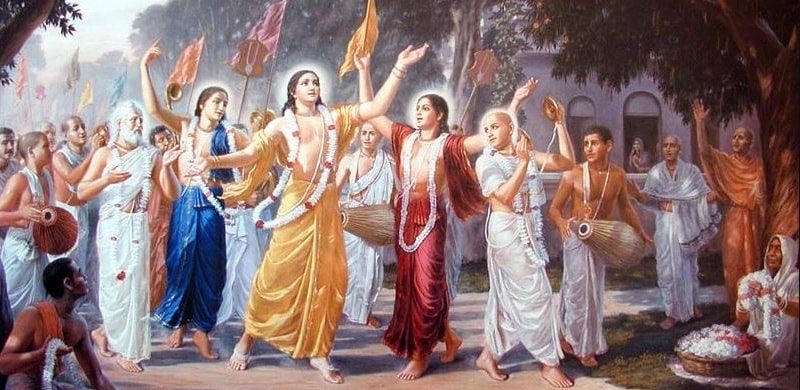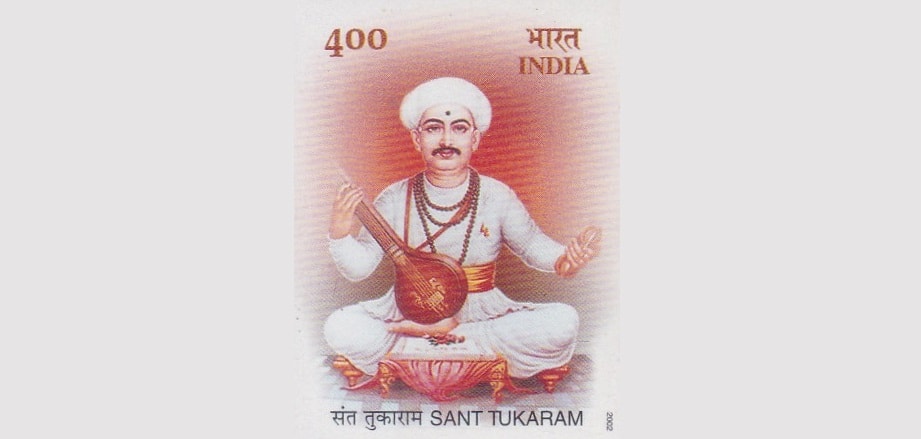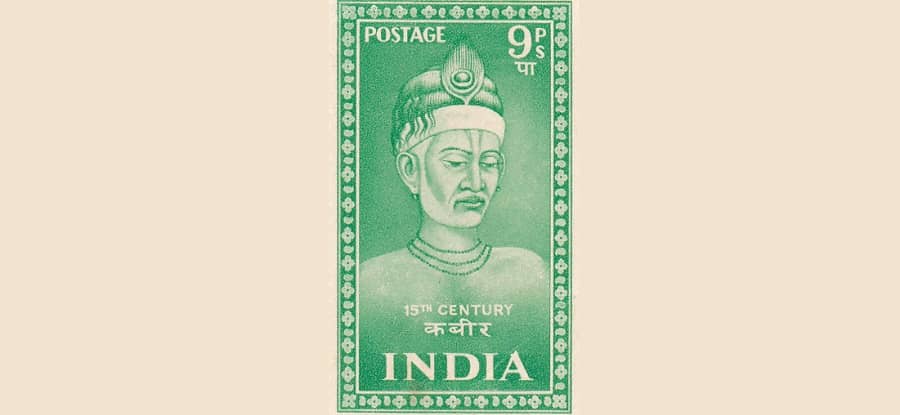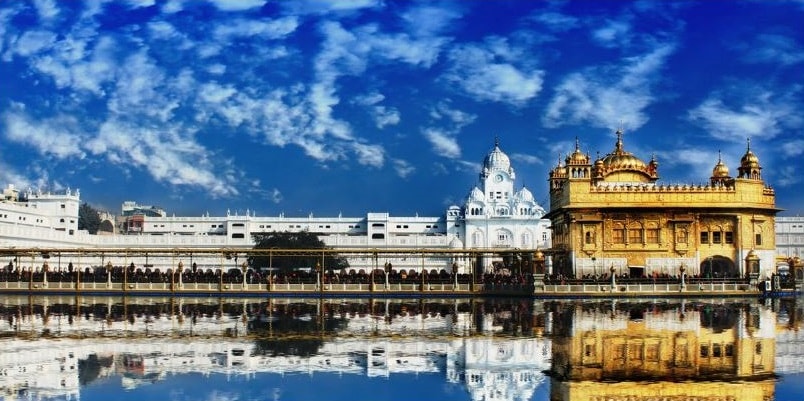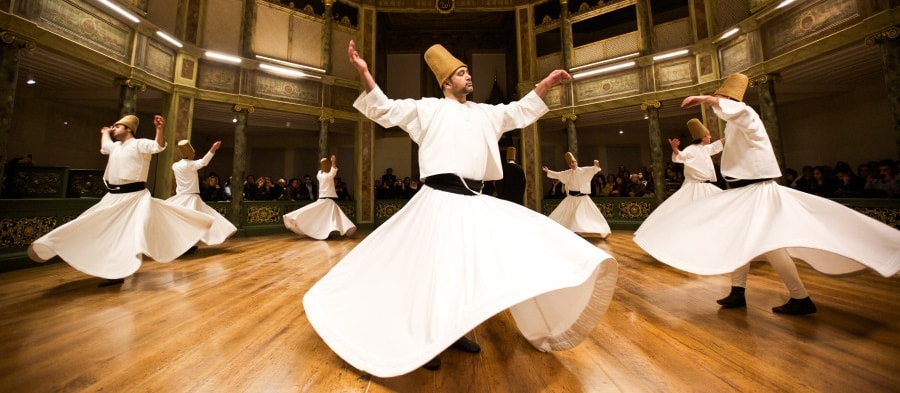Contents
bhakti movement sufism in india tukaram maharaj Sikh Gurus chaitanya mahaprabhu
>>>>>
Reasons of Bhakti & Sufi Movement
- There is a close relationship between socio-political and economic trends and religious activity, the bhakti movements cannot be seen in isolation.
>>>>>>
Political Front
- The 14th and 15th centuries saw the decline of the powerful and centralized state.
>>>>>>
Economic Front
- Artisans were coming from the ranks of people outside the professions
- They were not accepted as equals among the Indian artisans.
- Merchants also did not find place in the social hierarchy.
>>>>>>
Religious Equality
- People opposed to the traditional, rigid, elaborate and meaningless rituals that had crept into the society.
>>>>>>>
Social Participation
- The people who did not fit into the broad varna set-up were termed as the chandalas or the out-castes
>>>>>>
bhakti movement sufism in india tukaram maharaj Sikh Gurus chaitanya mahaprabhu
Characteristics of Bhakti & Sufi Movement
- Term ‘Bhakti’ symbolises ‘devotion or passionate love for the Divine’.
- Focused on singular devotion, mystical love for God
- These saints spoke of a direct relationship between man and god
- They had no desire to set up a separate religion, nor did they have blind faith in any of the sacred scriptures.
- The bhakti saints preached in simple vernaculars
- They came from the lower sections of the society and worked for their living.
- Most of the bhakti saints were artisans by origin or belonged to the class of less prosperous cultivators
>>>>>>>
>>>>>>>
Phases of Bhakti Movement
1st phase
- The first phase can be traced back to the origin of the Bhagavata cult
- In south India, Bhakti grew from a religious tradition to a popular movement in the 7th and 12th century CE
>>>>>>
2nd phase
- The second phase, spanning nearly four centuries, extended from the 13th to the 16th centuries
- They were not linked with any particular religious creed and did not believe in rituals and ceremonies.
- They condemned polytheism and believed in one god.
- Greatly emphasized on the fundamental unity of all religions.
bhakti movement sufism in india tukaram maharaj Sikh Gurus chaitanya mahaprabhu
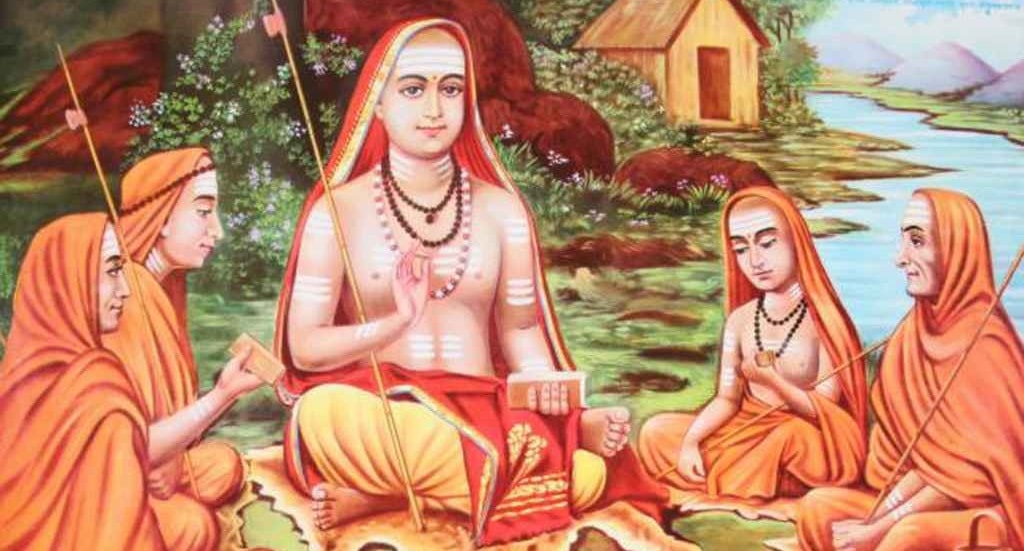
>>>>>>>
1st phase of Bhakti Movement
Sankaracharya
- Hindu revivalist movement of the 9th century
- He was born in Kaladi (Kerala)
- he propounded the Advaita (Monism) philosophy and Nirguna brahman (god without attributes).
- In Advaita, the reality of the world is denied and Brahman is considered as the only reality.
- According to him, gyaan (knowledge) alone can lead to salvation.
- He wrote commentary on the Bhagvat Gita, Upadesh Shastri, Vivek Chudamani, Bhaja Govindum Stotra
- Established mathas at Sringiri, Dwarka, Puri, and Badrinath.
>>>>>>
Ramanuja
- Born at Sriperumbudur near modern Chennai in the 12th century.
- He opposed the mayavada of Shankara
- He advocated the philosophy of Vishihsta Advaitavada (qualified monism),
- He founded the Sri Vaishnava sect.
- According to him, God is Saguna Brahman.
- He wrote Sribhashya, Vedanta dipa, Gita Bhasya, Vedantasara
>>>>>>
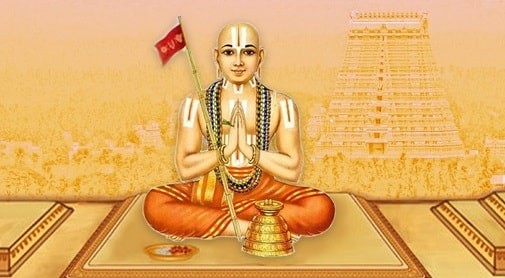
bhakti movement sufism in india tukaram maharaj Sikh Gurus chaitanya mahaprabhu
Madhavacharya
- In the 13th century, Madhava from Kannada region
- He propagated Dvaita or the dualism of the Jivatma and Paramatma.
- He also founded the Brahma Sampradya
>>>>>>
Nimbraka
- Nimbraka propounded the Dvaita advaita philosophy and the philosophy of Bheda Abheda
- Preacher of Vaishnavite Bhakti in the Telangana region.
- Worshipper of Krishna and Radha and established his ashrama in Braja (Mathura).
- He also founded the Sanak Sampradaya
>>>>>>
Vallabhacharya
- Born in Benaras in the 15th century and lived at the court of Krishnadeva Raya.
- He propounded the Shudhadvaita (pure monism)
- He was a preacher of the Krishna cult.
- Its philosophy is Pushtimarga.
- He founded the Rudra Sampradya
- Surdas was the disciple of Vallabhacharya who was blind and popularized the Krishna cult in north India.
>>>>>>
Vidyapati
- Vidyapati was a 14th century Maithili poet known for his
- His poetry dedicated to Shiva
>>>>>>>
bhakti movement sufism in india tukaram maharaj Sikh Gurus chaitanya mahaprabhu
Bhakti movement in Maharashtra (Pandharpur movement)
Jnaneswara or Jnanadeva
- A 13th century pioneer bhakti saint of Maharashtra
- commentary on the Bhagvat Gita called Jnanesvari
- Arguing against caste distinctions
- Known as Maharashtra dharma
>>>>>>
Namdeva
- He was a poet-saint from Maharashtra belonging to the 14th century
- He was greatly influenced by Islam
- One the five revered gurus in the Dadu panth tradition, other four being Dadu, Kabir, Ravidas, and Hardas
>>>>>>
Sant Eknath
- He was a Marathi saint Varkari sampradaya, belonging to the 16th century.
- In the development of Marathi literature, Eknath is seen as a bridge between his predecessors Dnyaneshwar and Namdeva and the later Tukaram and Ramdas.
- He introduced a new form of Marathi religious song called Bharood.
>>>>>>>>
bhakti movement sufism in india tukaram maharaj Sikh Gurus chaitanya mahaprabhu
Tukaram
- Tukaram was a 17th century poet-saint in Maharashtra
- He was a Sudra by birth.
- Tukaram is known for his Avangas (dohas)
- He was a contemporary of Shivaji and was responsible for creating a background for Maratha nationalism, ‘Parmaratha’.
>>>>>>
Ramdasa
- He was born in 1608 and was the spiritual guide of Shivaji.
- He wrote Dasabodha, combining his vast knowledge of sciences and arts with the principles of spiritual life.
>>>>
bhakti movement sufism in india tukaram maharaj Sikh Gurus chaitanya mahaprabhu
2nd phase
Ramananda
- Ramananda lived in the 15th century, born in Allahabad
- He was a follower of Ramanuja.
- Later, he founded his own sect and preached his principles in Hindi at Benaras and Agra.
- He considered it to be the link between the South Indian Bhakti and North Indian Vaishnava Bhakti traditions
- He was the founder of the Ram cult in north India.
- Ramananda like the monotheist bhakti saints, also rejected caste hierarchies
- He was against the rigidity of the Hindu philosophy
- His major contribution was the use of the common language
- The teachings of Ramananda created two distinct schools among his disciples and the later bhakti saints.
>>>>>>
bhakti movement sufism in india tukaram maharaj Sikh Gurus chaitanya mahaprabhu
Two schools
Nirguna
- Nirguna school represented by Kabir
- Kabir preached absolute abolition of caste and seriously questioned the authority of the Vedas.
- He also made an attempt to learn from Islam and tried to establish a synthetic movement which made him to declare the famous dictum that Ram and Rahim are equal.
- Some of the other important saints Nanak, Dadu Dayal, Raidas, etc.
- These philosophers denied both the Hindu and the Muslim ideas of God and even equated them by stating that they were identical.
>>>>>>>
Saguna
- Suguna tried to enrich the religion of Hinduism and also preserved the authority of the Vedas and did not wish to break away from the past.
- Chaitanya, Shankardeva, Surdas, Mirabaiand Tulsidas are some of the most important saguna saints.
>>>>>>
bhakti movement sufism in india tukaram maharaj Sikh Gurus chaitanya mahaprabhu
Nirguna School
Kabir (1398 – 1518)
- Kabir was a Bhakti poet whose verses are found in the Sikh holy scripture, Adi Granth.
- He was born near Benares to a Brahman widow, but was brought up by a Muslim couple
- Kabir laid great emphasis on the equality of man before God.
- His dohas and sakhi (poems), whose collection is found in the Bijak
- Other writings are ‘Sakhi Granth’, ‘Anurag Sagar’ and ‘Kabir Granthawali’
- Sikandar Lodhi was his contemporary
bhakti movement sufism in india tukaram maharaj Sikh Gurus chaitanya mahaprabhu
Sikh Gurus
Guru Nanak (1469 – 1539)
- Guru Nanak is the 1st Sikh Guru and founder of the Sikhism, who was also a Nirguna Bhakti Saint.
- He was born in a village of Talwandi (now called Nankana, in Pakisthan), on the banks of the river Ravi in 1469.
- Guru Nanak was opposed to all distinctions of caste.
- He is also said to have met Babur.
- After his death, his followers called themselves ‘Sikhs’ and a new religious sect, Sikhism, was founded.
- Nanak was followed by nine Sikh gurus.
>>>>>
Guru Angad
- The 2nd guru, started the Gurumukhi script.
- He started the tradition of Mall Akhara
>>>>>
Guru Amardas
- The 3rd guru, began the institution of langar (commonkitchen) to abolish the caste system.
- Preached against the Hindu society’s sati system and advocated widow-remarriage
- Asked Akbar to remove the pilgrim’s tax for non-Muslims
bhakti movement sufism in india tukaram maharaj Sikh Gurus chaitanya mahaprabhu
Guru Ramdas
- 4th guru, was given the site of Harmandir at Amritsar by Akbar.
- Guru Ramdas also laid the foundation stone of Chak Ramdas or Ramdas Pur, now called Amritsar.
- Composed the four Lawans (stanzas) of the Anand Karaj, a distinct marriage code for Sikhs.
>>>>
bhakti movement sufism in india tukaram maharaj Sikh Gurus chaitanya mahaprabhu
Guru Arjan
- 5th guru, compiled 1st official edition of Sikh scripture Adi Granth,
- Later it expanded into the Guru Granth Sahib.
- Guru Arjan completed the construction of the Harmandir at Amritsar.
- He installed the Adi Granth inside the new temple in 1604.
- Guru Arjan was arrested asked to convert to Islam under the orders of Jahangir.
- He refused, was tortured and executed in 1606.
>>>>>>
Guru Hargobind
- 6th guru, who was also imprisoned by Jahangir for ten years.
- Longest tenure as Guru.
- He transformed Sikhs into a militant community, established the Akal Takht, and fortified Amritsar.
- Defeated a Mughal army at Sangrama.
- Took the title of Sachcha Padshah.
- Shifted his headquarters to Kartarpur.
- Guru Hargobind was the proprietor of the concept of miri and piri
>>>>
Guru Tegh Bahadur
- The 9th guru, was executed by Aurangzeb
>>>>>
Guru Gobind Singh
- 10th and last guru
- He passed the Guruship of the Sikhs to the Guru Granth Sahib.
- Established the Khalsa in 1699 at Anandpur Sahib and organised the Sikhs into a military sect.
- All his sons were killed by a Mughal army at Sirhind, and he was also slain by a Pathan in revenge.
- The orthodox Sikhs are also distinguished by the five kakka (the five k’s), kesa (top knot), kachha (short drawers), kara (iron bangle), kanga (comb) and kirpan (sword)
bhakti movement sufism in india tukaram maharaj Sikh Gurus chaitanya mahaprabhu
Dadu Dayal (1544–1603)
- Dadu Dayal is one of the major representatives of the Nirguna Sant
- He was from Gujarat, who spent the best part of his spiritual life in Rajasthan.
- ‘Dadu’ means ‘brother’, and ‘Dayal’ means ‘the compassionate one’
- Emperor Akbar was one of his followers.
- His followers, Dadupanthis, expose their dead like the Parsis.
>>>>>>
bhakti movement sufism in india tukaram maharaj Sikh Gurus chaitanya mahaprabhu
Saguna School
Chaitanya Mahaprabhu (1436 – 1533)
- Well-known saint, ascetic Hindu monk, and social reformer of Bengal
- He popularised the Krishna cult in the 16th century.
- Popularised the Sankirtan/Kirtan system
- biography of Chaitanya was written by Krishnadas Kaviraj.
>>>>>>
Surdas (1483—1563)
- He popularized the Krishna cult in UP
- He was the author of Sur Sagara, Sur Sarawali
bhakti movement sufism in india tukaram maharaj Sikh Gurus chaitanya mahaprabhu
Mirabai (1498—1569)
- Hailing from the Sisodia dynasty of Chittor
- She was a great devotee of Krishna
- Popularised his cult in Rajasthan through her songs.
>>>>>>
Sankaradeva (1463—1568)
- A contemporary of Chaitanya, he spread Vaishnava bhakti in Assam.
>>>>>>
Tulsidas (1532—1623)
- He was a worshipper of Rama
- Tulsidas composed the famous Ramcharit manas in Hindi
- Expounding the various aspects of Hindu dharma.
>>>>>>
Narsingh Mehta
- Saint from Gujarat who wrote songs in Gujarati depicting the love of Radha–Krishna.
- Author of Mahatma Gandhi’s favorite bhajan –“Vaishanava jan ko”
>>>>>>
Saint Tyagaraja
- He was one of the greatest composers of Carnatic music,
- Saint Tyagaraja composed thousands of devotional compositions, most in Telugu and in praise of Lord Ram.
- He was a prolific composer and composed the famous Pancharatna Kritis
>>>>>>
bhakti movement sufism in india tukaram maharaj Sikh Gurus chaitanya mahaprabhu
Sufism in India
- The word ‘sufi’ is derived from ‘suf’, which means wool in Arabic, it also means ‘purity’,
- Sufism or mysticism emerged in the 8th century,
- The early known Sufis were Rabia al-Adawiya, Al-Junaid, and Bayazid Bastami.
- Well-developed movement by the end of the 11th century.
- Al Hujwiri, regarded as the oldest Sufi in the sub-continent.
- By the 12th century, the Sufis were organised in Silsilahs
>>>>>>
Chisti Order
- Established in India by Khwaja Muinuddin Chishti,
- He moved to India after the invasion of Muhammad Ghori, and settled in Ajmer around c.1206 CE
- His dargah reached unprecedented heights after the support of Mughal Emperor Akbar.
- The Chisti presence in Delhi was established by Qutbuddin Bakhtiyar Kaki (the Qutub Minar is named after him)
- Another sufi saint was Nizamuddin Auliya, who lived in the 14th century
>>>>>>
Suhrawardi Silsilah
- The Silsilah was founded by Shihabuddin Suhrawardi in Baghdad
- It was established in India by Bahauddin Zakariya.
>>>>>>
Naqshbandi Silsilah
- This order was established in India by Khwaja Bahauddin Naqshbandi
- Propagated by his successors, Sheikh Baqi Billah and Shaikh Ahmad Sirhindi
>>>>>>
Qadri Silsilah
- The Quadiriyya Silsilah, was popular in Punjab
- Started during the Mughal rule under the teachings of Sheikh Abdul Qadir and his sons, Shaikh Niamtullah, Mukhdum Muhammad Jilani, and Miyan Mir, who had enrolled the Mughal princess Jahanara and her brother Dara as disciples.
- Another prominent pir was Shah Badakhshani.
- The pirs of this Order supported the following:
>>>>>>
bhakti movement sufism in india tukaram maharaj Sikh Gurus chaitanya mahaprabhu
Impact of Bhakti Movement
- Development of Regional Literature
- Lower classes and women were raised to a position of greater importance.
- Interaction and unity among the two communities, Hindu and Muslim
>>>>>>
New Languages Emerged
Hindi
- The Hindi language originated between the 7th and 10th centuries.
- First stage of Hindi literature, known as adi kala (1206—1318)
- Narapati Nalha and Amir Khusrau were the two major poets of the adi kala.
- Second stage, known as bhakti kala (1318—1643
>>>>>>
Urdu
- It emerged due to the interaction of Persian and Indian languages in the military camps of Ala-uddin Khalji
- The Deccan was the cradle of Urdu and the language flourished first in the kingdoms of Bijapur and Golconda
- Amir Khusro interspersed it with Persian as first school of ghazal poets emerged in the Deccan during the 15th and 16th centurie
- works of Vali reached Delhi in 1720, the town was in an uproar and,within a decade, Urdu became the language of poetry
>>>>>>
Oriya
- Although Oriya originated in the 8th century, major works in the language appeared only in the 13th and 14th centuries.
- Important Oriya writers were Sarladasa (Mahabharata in the 14thcentury),
>>>>>>
Bengali
- The first stage covered the period between the 10th and 12th centuries.
- Its literature was mainly in the form of folk songs and influenced by the philosophy of the Sahaja cult
>>>>>>
Gujarati
- The first phase, from the 13th to 15th centuries
- It was marked by two main forms—the prabandha (narrative poem) and the mukta (shorter poem)
- Important poets of this phase were Sridhara and Bhima
>>>>>>
Marathi
- Marathi literature emerged in the latter half of the 13th century.
- A major contribution was made by the saint poets of the Natha cult (foundedby Gorakhanatha) such as Mukundaraja
>>>>>>
Tamil
- The literature of the Alvars or Vaishnava saints was known as Prabhanda, the most important among them being Nalayiram
>>>>>>
Telugu
- The group of poets called kavitraya were Nannaya (1Ith century), Tikkana (13th century) and Yerrapragada(13th and 14th century).
- They translated the Mahabharata into Telugu.
>>>>>>
Kannada
- The earliest extant work in Kannada is Kavirajamarga by Rashtrakuta Amoghavarsha I.
>>>>>>
Malayalam
- The earliest literary work in Malayam is Unnunili Sandesam, a work by an unknown writer of 14th century
- Ramanuja Elluttoccan (greatest of all) wrote Harinamakirtanam, Bhagavatam Kilippattu
bhakti movement sufism in india tukaram maharaj Sikh Gurus chaitanya mahaprabhu

